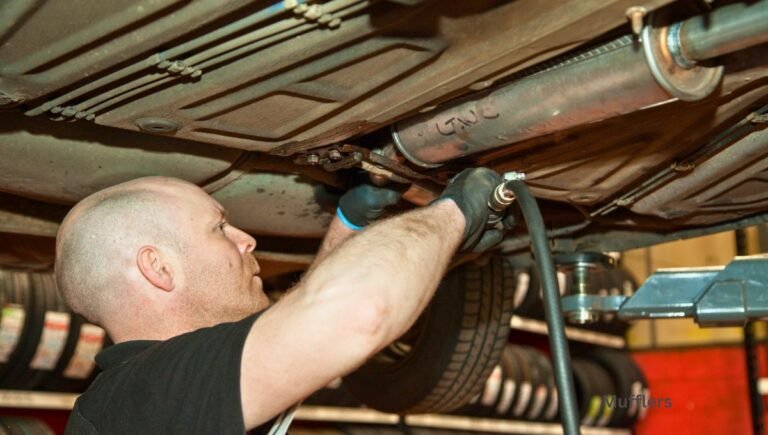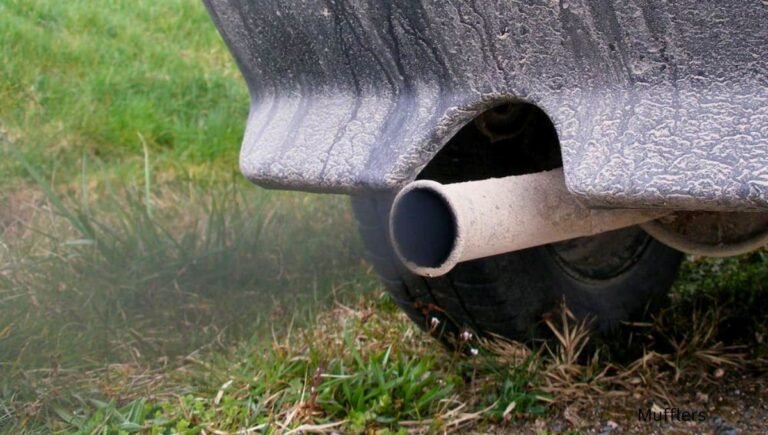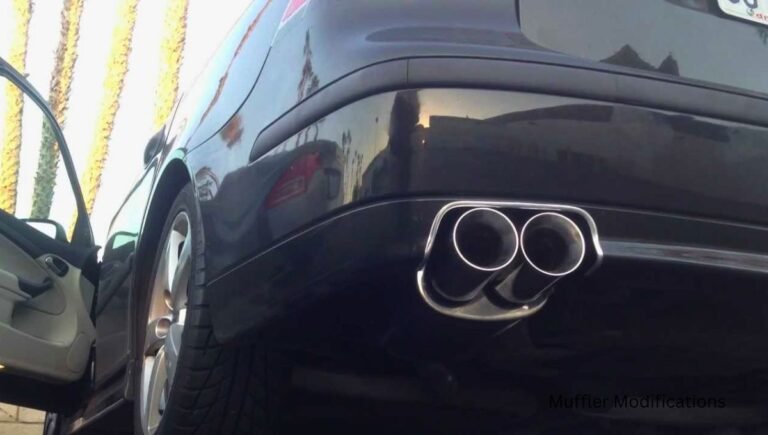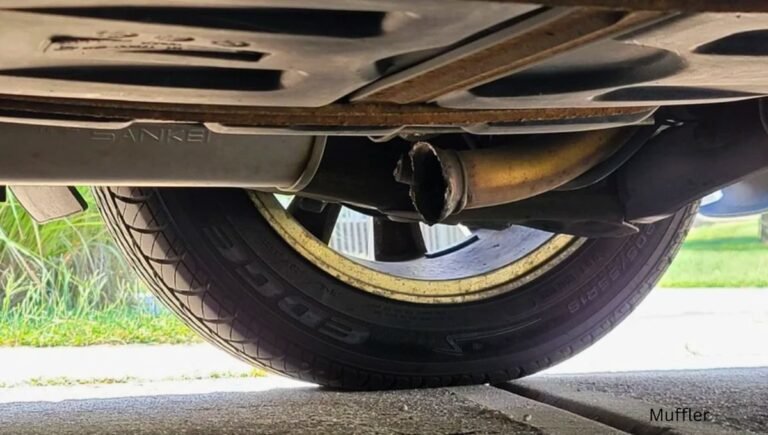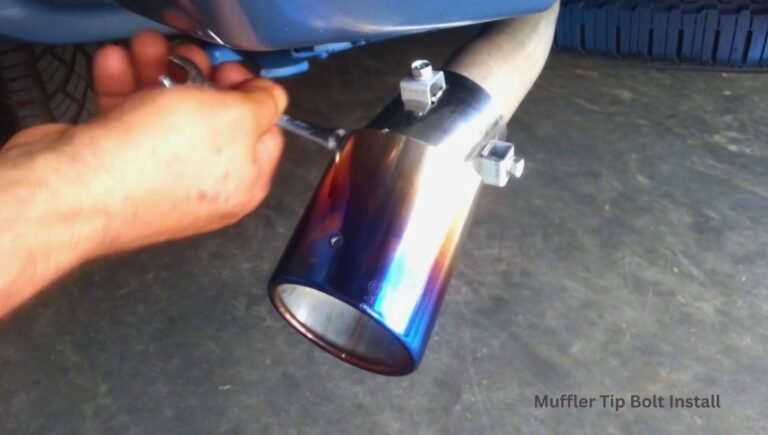Can You Pass Smog Without a Muffler? Essential Insights
Yes, you cannot pass smog without a muffler as it is a vital component for emissions control. A muffler helps reduce noise and emissions by filtering the exhaust gases.
Without a functioning muffler, your vehicle will not meet the required emissions standards, leading to a failed smog test. It is illegal and environmentally harmful to drive without a muffler, so it is essential to ensure your vehicle is properly equipped to pass smog checks.
Be sure to address any muffler issues promptly to avoid penalties and contribute to a cleaner environment.
The Role Of A Muffler In Vehicle Emissions
The muffler plays a crucial role in reducing vehicle emissions by minimizing noise and filtering harmful gases. Without a muffler, passing a smog test becomes challenging due to increased emissions levels. The muffler’s presence is essential for maintaining eco-friendly and compliant vehicle operation.
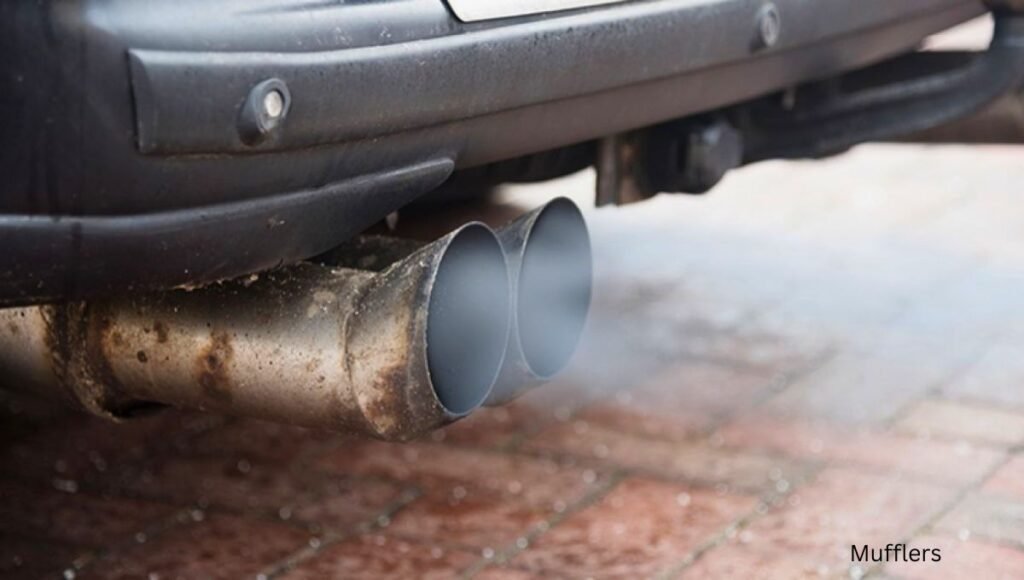
Key Functions Of A Muffler
A muffler is an essential component of a vehicle’s exhaust system. It plays a crucial role in reducing noise levels and ensuring that the vehicle meets emission standards. A muffler is responsible for reducing the noise produced by the engine, which can be harmful to the environment and people. It is a device that reduces the sound waves generated by the engine and exhaust system.
There are several key functions of a muffler. First, it reduces the noise generated by the engine and exhaust system. Second, it helps to improve the overall performance of the engine by reducing backpressure. Third, it reduces emissions and ensures that the vehicle meets emission standards.
Muffler Impact On Emission Levels
The muffler is an essential component of the vehicle’s exhaust system, and it plays a critical role in reducing emissions. The exhaust system is responsible for removing harmful gases and pollutants from the engine. The muffler helps to reduce emissions by reducing the noise generated by the engine and exhaust system.
A muffler with a damaged or missing catalytic converter can increase the vehicle’s emissions. The catalytic converter is responsible for converting harmful gases and pollutants into less harmful substances before they are released into the atmosphere. If the catalytic converter is damaged or missing, the vehicle’s emissions will increase, and it may fail the smog test.
It is important to ensure that the muffler is in good condition and functioning correctly. Regular maintenance and inspections can help to identify any issues with the muffler and exhaust system. If there are any problems, they should be addressed immediately to ensure that the vehicle meets emission standards and passes the smog test.
In conclusion, the muffler plays a critical role in reducing noise levels and ensuring that the vehicle meets emission standards. It is important to ensure that the muffler is functioning correctly and in good condition. Regular maintenance and inspections can help to identify any issues and ensure that the vehicle passes the smog test.
Understanding Smog Tests
Criteria For Passing Smog Checks
In order to pass a smog test, vehicles must meet certain criteria to ensure they are not emitting excessive pollutants into the atmosphere. The test typically evaluates the vehicle’s exhaust emissions, including levels of carbon monoxide, hydrocarbons, and nitrogen oxides.
Proper functioning of the vehicle’s emission control components, such as the catalytic converter, oxygen sensors, and exhaust gas recirculation system, is essential for meeting the criteria for passing a smog check.
Emission Standards And Legal Requirements
Each state has its own set of emission standards and legal requirements that vehicles must adhere to in order to pass a smog test. These standards are in place to protect the environment and public health by reducing air pollution.
It is important for vehicle owners to be aware of the specific emission standards and legal requirements in their state to ensure their vehicle is in compliance with the law. Regular maintenance and prompt repairs of any issues related to the vehicle’s emission system are essential to meet these standards and legal requirements.
Muffler Removal And Emissions
When it comes to passing smog tests, it’s essential to have a muffler in good condition. The muffler is an integral part of your vehicle’s exhaust system, as it helps to reduce noise and control emissions.
However, some drivers may consider removing their muffler to improve performance or achieve a specific sound. But the question is, can you pass smog without a muffler? Let’s take a closer look at muffler removal and emissions.
Effects Of Removing A Muffler
If you remove your muffler, the exhaust gases will exit the vehicle more quickly, resulting in a louder and more aggressive sound. However, removing the muffler can have a significant impact on emissions.
The muffler’s primary function is to reduce the noise produced by the engine and control the amount of harmful pollutants released into the environment. Therefore, removing the muffler will increase the number of pollutants released into the air, which can lead to a failed smog test.
Potential Risks And Fines
Driving a vehicle without a muffler can also result in potential risks and fines. Without a muffler, your vehicle will produce a much louder noise, which can be a distraction to other drivers on the road.
Removing the muffler can cause damage to your engine, as it disrupts the flow of exhaust gases. You may also receive a fine for driving a vehicle with excessive noise levels, as many states have laws regarding vehicle noise pollution. It’s essential to keep your muffler in good condition to avoid these potential risks and fines.
In conclusion, removing your muffler can have significant effects on emissions, potential risks, and fines. Therefore, it’s essential to maintain your muffler in good condition to pass a smog test and avoid any potential hazards or legal issues.
Alternative Paths To Pass Smog Tests
When it comes to passing smog tests, many car owners wonder if it’s possible to do so without a muffler. While a muffler plays an important role in reducing noise and emissions, there are alternative paths you can explore to ensure your vehicle complies with smog regulations. In this article, we will discuss temporary solutions and long-term modifications that can help you pass smog tests without a muffler.
Temporary Solutions For Smog Compliance
If you find yourself in a situation where your muffler needs repair or replacement, and a smog test is imminent, there are a few temporary solutions you can consider. These solutions are meant to provide a short-term fix to ensure your vehicle meets the necessary emission requirements:
- Exhaust Leak Repair: If your muffler is causing an exhaust leak, fixing the leak can help reduce emissions and improve your chances of passing the smog test. Identifying and repairing any leaks in the exhaust system should be your first step.
- Temporary Muffler Replacement: While not ideal, you can temporarily replace your muffler with a suitable alternative. Look for a muffler designed to reduce noise and emissions, even if it may not provide the same level of performance as a permanent solution.
- Engine Tune-Up: A well-maintained engine is more likely to produce lower emissions. Consider getting a tune-up, which includes replacing spark plugs, filters, and other components that can impact your vehicle’s emissions.
Long-term Modifications For Emission Control
If you are looking for a more permanent solution to pass smog tests without a muffler, there are long-term modifications you can make to control emissions effectively:
- Catalytic Converter Installation: A catalytic converter is an essential component in reducing harmful emissions. Installing a high-quality catalytic converter can significantly improve your vehicle’s emission control and increase your chances of passing the smog test.
- Exhaust System Upgrade: Upgrading your exhaust system with emission-compliant components can help in achieving better emission control. Consider investing in a high-performance exhaust system designed to minimize emissions without compromising power.
- Engine Modification: In some cases, modifying your engine can help improve its emission characteristics. This may involve adjusting the fuel-air mixture, upgrading certain engine components, or even converting to alternative fuel sources like LPG or CNG.
Remember, it’s important to consult with a professional mechanic or automotive expert before making any modifications to your vehicle’s exhaust system or engine. They can guide you in selecting the most suitable options that comply with smog regulations and ensure the optimal performance of your vehicle.
Pros And Cons Of Muffler-less Vehicles
Muffler-less vehicles can offer increased engine performance but may lead to noise pollution and legal issues. Passing smog without a muffler is usually not possible due to emission regulations. Despite the benefits, muffler-less vehicles may not be suitable for everyday driving.

Mufflers are an essential component of a vehicle’s exhaust system, designed to reduce noise and control emissions. However, there are some people who choose to remove their mufflers for various reasons. In this section, we will explore the pros and cons of driving a vehicle without a muffler.
Performance Implications
Driving a vehicle without a muffler can have both positive and negative effects on its performance. Here are some key points to consider:
1. Increased Horsepower: One potential benefit of removing the muffler is the increase in horsepower. By eliminating the restriction caused by the muffler, the exhaust gases can flow more freely, resulting in improved engine performance.
2. Enhanced Engine Sound: Another advantage for some enthusiasts is the louder and more aggressive engine sound produced by a muffler-less vehicle. This can add a sporty or customized feel to the driving experience.
3. Decreased Backpressure: With the muffler removed, the exhaust gases can exit the system more quickly, reducing backpressure. This can potentially lead to improved throttle response and acceleration.
However, it’s important to note that these performance benefits may vary depending on the specific vehicle and its engine. Additionally, removing the muffler can have some drawbacks that need to be considered.
Environmental And Health Considerations
While driving a vehicle without a muffler may offer some performance advantages, there are significant environmental and health considerations to keep in mind:
1. Increased Noise Pollution: One of the most noticeable drawbacks of muffler-less vehicles is the increased noise they produce. This can be disruptive to both the driver and those around them, contributing to noise pollution in residential areas.
2. Excessive Emissions: Mufflers play a crucial role in reducing harmful emissions released into the atmosphere. Without a muffler, the vehicle may produce higher levels of pollutants, negatively impacting air quality and contributing to environmental pollution.
3. Legal Compliance: Driving a vehicle without a muffler is often against the law in many jurisdictions. It’s important to check local regulations and ensure compliance with noise and emissions standards to avoid potential fines or legal consequences.
Considering the pros and cons discussed above, it becomes clear that removing a muffler can have both positive and negative implications. It’s essential to weigh these factors carefully and make an informed decision based on your specific circumstances and priorities. Always consult with automotive experts and local authorities to ensure compliance with regulations and minimize any negative impact on the environment and community.
Legal Aspects Of Mufflers And Emission Control
In the realm of vehicle modifications and emissions control, the presence or absence of a muffler can have legal implications. Understanding the legal aspects of mufflers and emission control is crucial for vehicle owners to ensure compliance with state-specific laws and avoid penalties for non-compliant vehicles.
State-specific Emission Laws
Each state in the US has its own set of laws and regulations governing vehicle emissions, including requirements related to mufflers. State-specific emission laws mandate the use of properly functioning mufflers to reduce noise pollution and control emissions. Failure to comply with these laws can result in fines and penalties.
Penalties For Non-compliant Vehicles
Vehicles that do not meet the emission standards, including those lacking a muffler or equipped with a non-compliant muffler, can face penalties for non-compliant vehicles. These penalties may include fines, vehicle impoundment, or registration suspension. It is essential for vehicle owners to be aware of and adhere to the emission laws in their respective states to avoid legal consequences.
Expert Tips For Maintaining Low Emissions
Maintaining low emissions is crucial for passing smog tests without a muffler. Follow expert tips like regular engine tune-ups, using quality fuel, and ensuring proper tire inflation to reduce emissions effectively. Taking proactive measures can help you pass smog tests effortlessly and keep the environment cleaner.
Regular Vehicle Maintenance Routines
Regular maintenance minimizes emissions and ensures optimal vehicle performance.
Choosing The Right Replacement Parts
Selecting quality parts improves emissions efficiency and vehicle longevity.
Conclusion
To pass smog without a muffler is challenging. It may be possible in some states, but not recommended. It can harm the environment and your vehicle’s performance. It’s best to maintain a functioning muffler for a smoother, more eco-friendly driving experience.
Always consult local regulations for accurate guidance.


